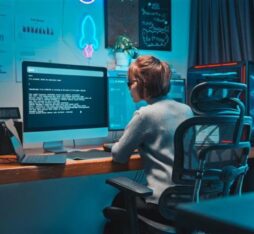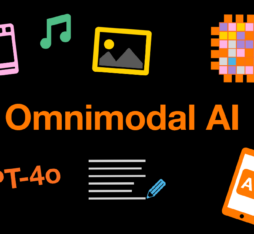- L’essor des outils d’intelligence artificielle pourrait faire disparaître certaines professions juridiques, notamment dans les cabinets d’avocats.
- Les outils actuels, dont Jarvis, Doctrine ou ceux développés par LexisNexis, visent à simplifier les travaux de recherche, de synthèse, d’analyse ou de rédaction de documents.
- Ils permettent aux avocats de se concentrer sur la stratégie et le contentieux, tout en gagnant du temps sur des tâches quotidiennes, et en restant à jour sur les textes de loi.
Thomson Reuters’ acquisition of the software developer Casetext for 650 million dollars on 17 August 2023 certainly caught the attention of legal professionals. CoCounsel, the legal assistant created by the start-up makes use of GPT-4-based AI to analyse documents, write research memos, draft depositions, and extract key data from contracts. In the United States, the emergence of this technology has raised important questions about the future of paralegals. In March of this year, a study conducted by researchers at Princeton, the University of Pennsylvania and New York University found that the legal services sector was very heavily exposed to advances in the field of language models like ChatGPT, even if the largest of these, which are multilingual and designed for general use, are not suitable for legal tasks given their tendency to mix information from a variety of different jurisdictions. Nonetheless, AI systems have now emerged to address the specific needs of American lawyers, notably the discovery procedures often required by US law, which involve the painstaking analysis of huge volumes of documents. And regardless of the country where they practice, it is entirely likely that AI will soon become a valued time-saving tool for lawyers elsewhere in the world, enabling them to focus more closely on strategy and on the defence and counselling of their clients.
Consolidated data with Doctrine’s “legal graph”
“Today’s computers allow us to separate law from its original sources, and to process unlimited quantities of documents”, points out Philippe Laurence, Doctrine’s director of public affairs. Describing itself as a legal intelligence platform, Doctrine enables lawyers and legal professionals to draw on a vast and ever-growing number of legal sources. “Our first challenge was to centralise the largest possible number of legal sources, i.e.10 million court decisions, 90,000 articles of law and other commentaries by professors and lawyers, etc.” Once this was done, Doctrine created what it terms its “Legal graph” a vast data structure detailing connections within all this information: “With automatic language processing, we were able to link decisions with commentaries that cite them and articles of law etc.” The new tool enables users to create personalised alerts for individual keywords and to analyse the content of documents. “When it analyses a document, Doctrine highlights the sources cited, more recent decisions and articles of law, and differences that have emerged over time: an understanding that can be deployed in support of one side’s legal arguments or to undermine the position of their opponents.” Generative AI has yet to be fully integrated within the system, although it is used to annotate and facilitate easier identification of data, like the names of laws, decisions and people who are mentioned.
AI also has the potential to expedite due diligence in financial transactions and the analysis of contracts and legal audits.
The LexisNexis AI service offering summaries, analyses and drafting
Other industry players like LexisNexis are counting on generative AI for their future development. The analytics and information provider has just launched its Lexis+AI service for US customers and is planning to make it available in other countries in the near future. “We are not just offering raw information, it is also contextualised,” points out Sébastien Bardou, the VP Strategy for Continental Europe, the Middle East and Africa at LexisNexis. “The system is able to identify atypical decisions handed down by supreme courts, and to flag others that are marked by biases in the interpretation of legal texts.”
Going against the industry consensus that search engines are still more effective for legal work than large language models (LLMs), the new LexisNexis services offers tools for the drafting of legal and other documents. “AI can be used to enhance content in emails to clients,” and to summarize large quantities of relevant information. “The system can also analyse documents and seek out legal references allowing for more detailed summaries. AI also has the potential to expedite due diligence in financial transactions and the analysis of contracts and legal audits.”
Jarvis, the virtual legal assistant
“Our goal is to provide lawyers with a personal, virtual, legal assistant to whom they can delegate time-consuming and repetitive tasks. The idea is to enable them to massively increase their productivity and regain control of their time,” explains Alexandre Yérémian, the CEO and co-founder of Jarvis Legal, a start-up named after Iron Man’s AI-powered assistant. Founded in 2013, the company has developed a SaaS solution that takes charge of billing and document management, which is fully integrated with Office365. “The development of our latest intelligent assistant Toni was based on the idea lawyers should be able to interact with a software tool much as they would with a colleague to whom they can delegate certain tasks.” The system, which offers access to analyses and summaries of legal decisions, also allows lawyers to request information on documents they have uploaded, enabling them to identify ideas for blog and LinkedIn posts. “Generative AI has paved the way for a vast range of applications for legal professionals, providing lawyers with tools to monitor the functioning of their businesses and to keep track of their billing.”
 Philippe Laurence
Philippe Laurence
 Sébastien Bardou
Sébastien Bardou











